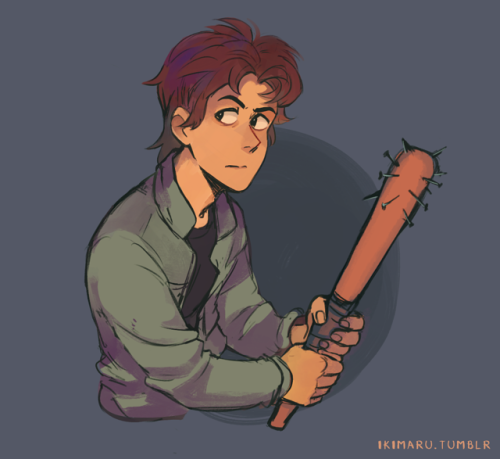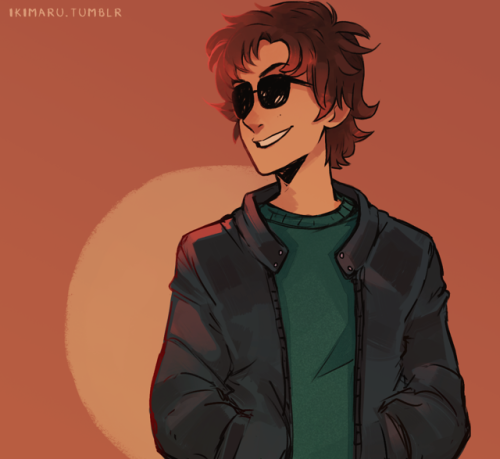Ourvioletdeath - Inner Ramblings Of The Mind




More Posts from Ourvioletdeath and Others
A reminder that turning in assignments for partial credit is better than not turning them in at all. It is. Even if you think you’ve done a bad job and are ashamed of your work, or it’s way overdue, you take whatever you can get. Partial credit dramatically improves your grade over a zero, and I’m always astounded by how often even the smartest kids don’t really comprehend that. 60% is worlds better than 0%. Even 10% is going to help you. Letter grades are misleading and are not created equal. “F"s are mathematically valuable. Turn that late assignment in.
The best babysitter


other fav character this season tho B)





(x)
bruh



The Björketorp Runestone & Curse
The Björketorp Runestone is one of many standing stones (menhir) located in Bleking, Sweden and is one of the world’s tallest runestones, measuring 13.7 feet (4.2 m) high. It is part of a stone circle with two other blank standing stones, with several other solitary stones in the surrounding regions. Most scholars date the runestone’s inscription to the 7th century AD. It’s carved with a type of runes that form an intermediate version between the Elder Futhark and the Younger Futhark. The runestone is inscribed on both sides, the shorter message appears to say “I foresee perdition” or “prediction of perdition” and the longer side’s inscription (pictured) translates as:
“I, master of the runes(?) conceal here runes of power. Incessantly (plagued by) maleficence, (doomed to) insidious death (is) he who breaks this (monument). I prophesy destruction / prophecy of destruction.”
Local lore says that the curse came true at one point. Long ago, a man wanted to move the runestone so that he could have more room to farm, so he piled wood around it to attempt to heat the stone and then crack it with water. The weather was calm with no wind at the time, but as soon as he lit the fire a sudden gust came and lit the man’s hair aflame. He dropped to the ground to put it out but his clothes caught fire and the poor man died in agony. The flame around the runestone, however, was miraculously extinguished, as if someone had smothered the fire.

What are memories made of? Study sheds light on key protein
Ask a nonscientist what memories are made of and you’ll likely conjure images of childhood birthday parties or wedding days. Charles Hoeffer thinks about proteins.
For five years, the assistant professor of integrative physiology at CU Boulder has been working to better understand a protein called AKT, which is ubiquitous in brain tissue and instrumental in enabling the brain to adapt to new experiences and lay down new memories.
Until now, scientists have known very little about what it does in the brain.
But in a new paper funded by the National Institutes of Health, Hoeffer and his co-authors spell it out for the first time, showing that AKT comes in three distinct varieties residing in different kinds of brain cells and affecting brain health in very distinct ways.
The discovery could lead to new, more targeted treatments for everything from glioblastoma—the brain cancer Sen. John McCain has—to Alzheimer’s disease and schizophrenia.
“AKT is a central protein that has been implicated in a bevy of neurological diseases yet we know amazingly little about it,” Hoeffer said. “Our paper is the first to comprehensively examine what its different forms are doing in the brain and where.”
Discovered in the 1970s and known best as an “oncogene” (one that, when mutated, can promote cancer), AKT has more recently been identified as a key player in promoting “synaptic plasticity,” the brain’s ability to strengthen cellular connections in response to experience.
“Let’s say you see a great white shark and you are scared and your brain wants to form a memory of what’s going on. You have to make new proteins to encode that memory,” he said. AKT is one of the first proteins to come online, a central switch that turns on the memory factory.
But not all AKTs are created equal.
For the study, Hoeffer’s team silenced the three different isoforms, or varieties, of AKT in mice and observed their brain activity.
They made a number of key discoveries:
AKT2 is found exclusively in astroglia, the supportive, star-shaped cells in the brain and spinal cord that are often impacted in brain cancer and brain injury.
“That is a really important finding,” said co-author Josien Levenga, who worked on the project as a postdoctoral researcher at CU Boulder. “If you could develop a drug that targeted only AKT2 without impacting other forms, it might be more effective in treating certain issues with fewer side-effects.”
The researchers also found that AKT1 is ubiquitous in neurons and appears to be the most important form in promoting the strengthening of synapses in response to experience, aka memory formation. (This finding is in line with previous research showing that mutations in AKT1 boost risk of schizophrenia and other brain disorders associated with a flaw in the way a patient perceives or remembers experiences.)
AKT3 appears to play a key role in brain growth, with mice whose AKT3 gene is silenced showing smaller brain size.
“Before this, there was an assumption that they all did basically the same thing in the same cells in the same way. Now we know better,” Hoeffer said.
He notes that pan-AKT inhibitors have already been developed for cancer treatment, but he envisions a day when drugs could be developed to target more specific versions of the protein (AKT1 enhancers for Alzheimer’s and schizophrenia, AKT2 inhibitors for cancer), leaving the others forms untouched, preventing side-effects.
More animal research is underway to determine what happens to behavior when different forms of the protein go awry.
“Isoform specific treatments hold great promise for the design of targeted therapies to treat neurological diseases with much greater efficacy and accuracy than those utilizing a one-size-fits-all approach,” the authors conclude. “This study is an important step in that direction.”

Based on a drawing prompt by @drawing-prompt-s Pretend you’re grabbing a ball, and fill that ball with energy from your aura. What does your aura ball look like?
~I love everything that involves Auras and energie, it’s a lot of fun to draw. Mine is green and the energy is always moving and froms sometimes to little lightnings. It looks very uncontrollable, but also very pretty

Diving across a hospital room to stop my patient’s hand from pulling their ET tube.





You’re teleported to 44 BCE Rome in your everyday street clothes. You’re brought before Caesar and he believes you might be from the future, hoping to bring him fortune. One day he questions you, asking “How Do I Die?”
-
 l-oveyou reblogged this · 3 weeks ago
l-oveyou reblogged this · 3 weeks ago -
 lavenderinkstains liked this · 4 weeks ago
lavenderinkstains liked this · 4 weeks ago -
 sistersilverhair liked this · 4 weeks ago
sistersilverhair liked this · 4 weeks ago -
 ambientdrops liked this · 1 month ago
ambientdrops liked this · 1 month ago -
 wallsarecrumbling reblogged this · 1 month ago
wallsarecrumbling reblogged this · 1 month ago -
 ringa-starr reblogged this · 1 month ago
ringa-starr reblogged this · 1 month ago -
 angelaviary reblogged this · 2 months ago
angelaviary reblogged this · 2 months ago -
 loudlyfreepeace liked this · 3 months ago
loudlyfreepeace liked this · 3 months ago -
 spirited-avvay liked this · 3 months ago
spirited-avvay liked this · 3 months ago -
 pradayournada liked this · 4 months ago
pradayournada liked this · 4 months ago -
 lamujermaldita reblogged this · 4 months ago
lamujermaldita reblogged this · 4 months ago -
 lamujermaldita liked this · 4 months ago
lamujermaldita liked this · 4 months ago -
 thriveandflourish reblogged this · 5 months ago
thriveandflourish reblogged this · 5 months ago -
 makeout-livelonger reblogged this · 5 months ago
makeout-livelonger reblogged this · 5 months ago -
 suubstance reblogged this · 5 months ago
suubstance reblogged this · 5 months ago -
 javainiuk liked this · 5 months ago
javainiuk liked this · 5 months ago -
 stonedonmars reblogged this · 5 months ago
stonedonmars reblogged this · 5 months ago -
 radicalcat444 liked this · 5 months ago
radicalcat444 liked this · 5 months ago -
 queenofqueenssss reblogged this · 5 months ago
queenofqueenssss reblogged this · 5 months ago -
 queenofqueenssss liked this · 5 months ago
queenofqueenssss liked this · 5 months ago -
 taken-for-picking-flowers reblogged this · 5 months ago
taken-for-picking-flowers reblogged this · 5 months ago -
 taken-for-picking-flowers liked this · 5 months ago
taken-for-picking-flowers liked this · 5 months ago -
 allhalemary liked this · 5 months ago
allhalemary liked this · 5 months ago -
 brebre0925 liked this · 5 months ago
brebre0925 liked this · 5 months ago -
 all1ir1na reblogged this · 5 months ago
all1ir1na reblogged this · 5 months ago -
 weepingkingdomperfection reblogged this · 5 months ago
weepingkingdomperfection reblogged this · 5 months ago -
 weepingkingdomperfection liked this · 5 months ago
weepingkingdomperfection liked this · 5 months ago -
 hippiegrlpwr liked this · 5 months ago
hippiegrlpwr liked this · 5 months ago -
 makeout-livelonger reblogged this · 5 months ago
makeout-livelonger reblogged this · 5 months ago -
 moreeeeweedddd reblogged this · 5 months ago
moreeeeweedddd reblogged this · 5 months ago -
 moreeeeweedddd liked this · 5 months ago
moreeeeweedddd liked this · 5 months ago -
 ijustwanttobehippie liked this · 5 months ago
ijustwanttobehippie liked this · 5 months ago -
 arilo95 reblogged this · 6 months ago
arilo95 reblogged this · 6 months ago -
 ilovebunnies224 liked this · 7 months ago
ilovebunnies224 liked this · 7 months ago -
 sunflowerinpearls reblogged this · 7 months ago
sunflowerinpearls reblogged this · 7 months ago -
 babewardkenway liked this · 7 months ago
babewardkenway liked this · 7 months ago -
 crazycherub liked this · 7 months ago
crazycherub liked this · 7 months ago -
 alwaysmej reblogged this · 7 months ago
alwaysmej reblogged this · 7 months ago -
 grace-love-wins liked this · 8 months ago
grace-love-wins liked this · 8 months ago -
 aallaricercadellafelicita reblogged this · 10 months ago
aallaricercadellafelicita reblogged this · 10 months ago -
 aallaricercadellafelicita liked this · 10 months ago
aallaricercadellafelicita liked this · 10 months ago -
 sono-un-fuori-programma reblogged this · 10 months ago
sono-un-fuori-programma reblogged this · 10 months ago -
 sono-un-fuori-programma liked this · 10 months ago
sono-un-fuori-programma liked this · 10 months ago -
 -withallmyheartandsoul reblogged this · 10 months ago
-withallmyheartandsoul reblogged this · 10 months ago